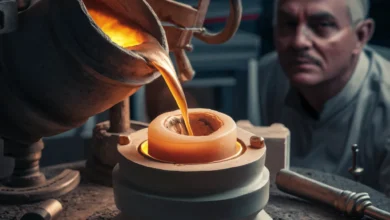In the vaping world, flavors are essentially the backbone. In fact, the e-liquid industry has evolved to become a multibillion-dollar one, and this is predominantly down to the innovative technology that has allowed for the creation of all these flavors.
With popular brands such as Jak’d e-liquid taking the world by storm, there’s no escaping the fact that flavored e-liquids are here to stay.
Concoctions of nicotine, vegetable glycerin, and propylene glycol all produce unique flavors, ranging from traditional tobacco to exotic fruits and desserts. As a vaper, you may not look beyond the cloud; however, a number of technical processes go into the creation of such. This technology is combined with creative artistry to create a desirable sensation for vapers of all capacities.
The Science of Flavor Perception: Unveiling the Senses

The science of flavor perception is what makes the flavorsome world of e-liquids possible. This combines smell, taste, and even tactile sensations, which all play a significant role in our perception of different flavors. For instance, our tongues are responsible for detecting the primary tastes, including salty, bitter, sour, sweet, etc. This is when the nose steps in to identify a range of aromatic compounds using the olfactory receptors. From this, the basis of flavor perception is formed, which enables e-liquid manufacturers to create layered and complex profiles.
From Raw Materials to Complex Compositions: Flavor Creation Process
Creating an e-liquid flavor is a complex process, beginning with choosing raw materials. This typically includes food-grade flavorings and other substances that have been derived from synthesized molecules or natural sources. These flavors are specifically selected for their compatibility with vaping liquids, which includes their ability to evoke certain aromas and tastes.
As previously mentioned, the blending of these flavorings is an artistic process, as manufacturers experiment with various combinations and concentrations to bring the intended flavor profile to life. Ultimately, all manufacturers are looking to achieve the perfect balance between individual notes that allow for a harmonious blend of vapors.
Innovations in Flavor Technology: A Glimpse into the Future

Technology is constantly evolving, and this means that its impact on various industries is, too. As a result, innovations are consistently presenting themselves to push the boundaries of what’s possible and create an immersive vaping experience. To that end, detailed below are just some of the innovations in flavor technology:

- Molecular gastronomy influences – These techniques are borrowed from the culinary world, as molecular gastronomy principles allow for the creation of surprizing sensations. For instance, the textural and visual aspects of vaping can be enhanced by encapsulation, foaming, and spherification.
- Synthetic flavor molecules – Thanks to organic chemistry that’s consistently evolving, novel flavor compounds have been created, and these don’t already exist in nature. As a result, entirely new taste experiences are made possible, meaning the envelope of traditional flavours is pushed further.
- Customizable blending – One tactic of vaping companies is to enable vapers to become e-liquid mixologists themselves. For instance, e-liquid blending kits facilitate individuals in the blending of their own flavors, which deepens their connection to the overall vaping experience.
- Temperature-responsive flavors – Temperature-responsive flavors are designed to add an additional layer to the vaping experience. Instead of just having one flavor, vapers can experience one taste at lower temperatures and another as the device heats up.
- Neurogastronomy and emotional resonance – Flavors and emotions are interconnected, which is why researchers are working to explore this connection. Via the use od neurogastronomy, manufacturers are working to trigger specific feelings by way of their e-liquid flavors. These feelings include nostalgia, relaxation, and everything in between.






